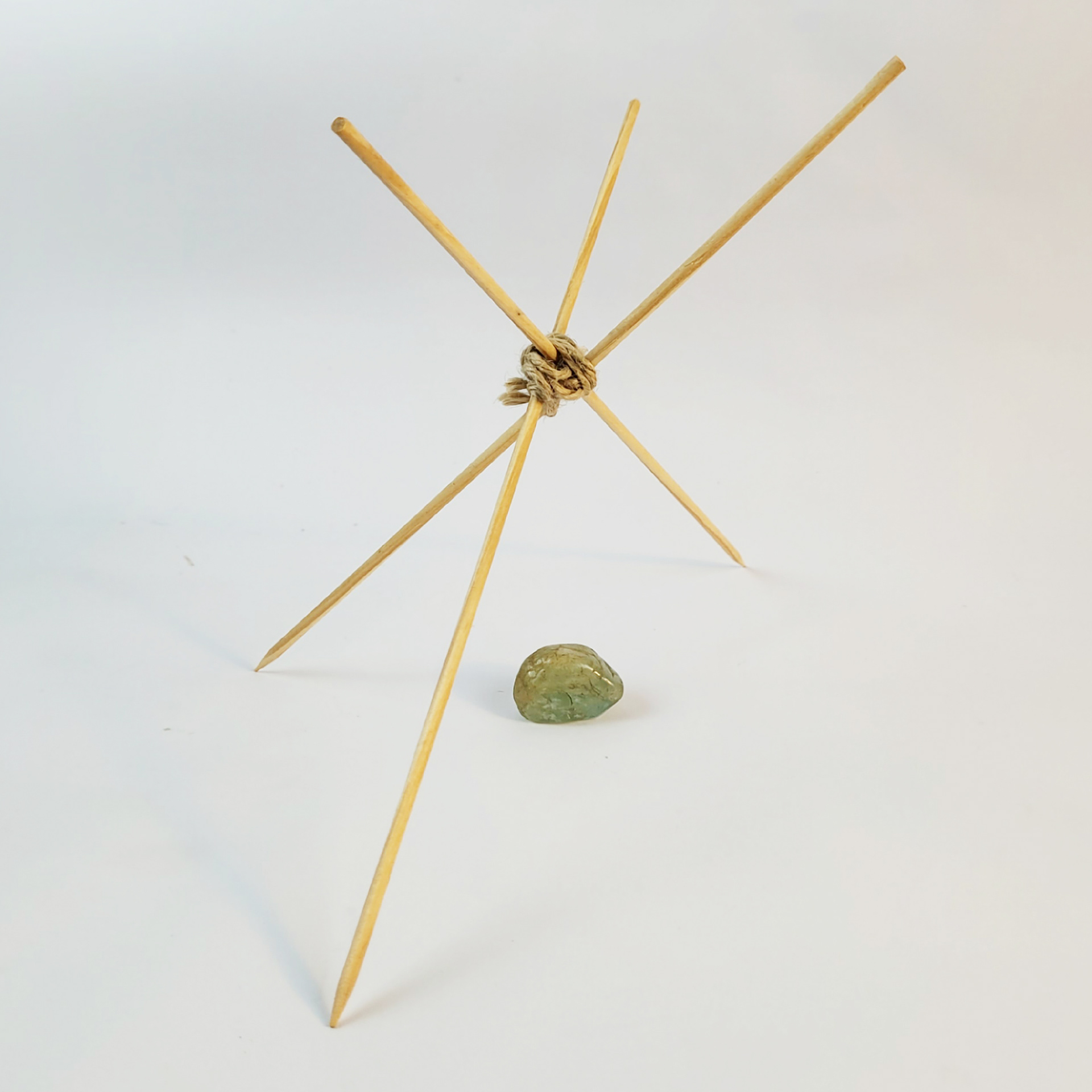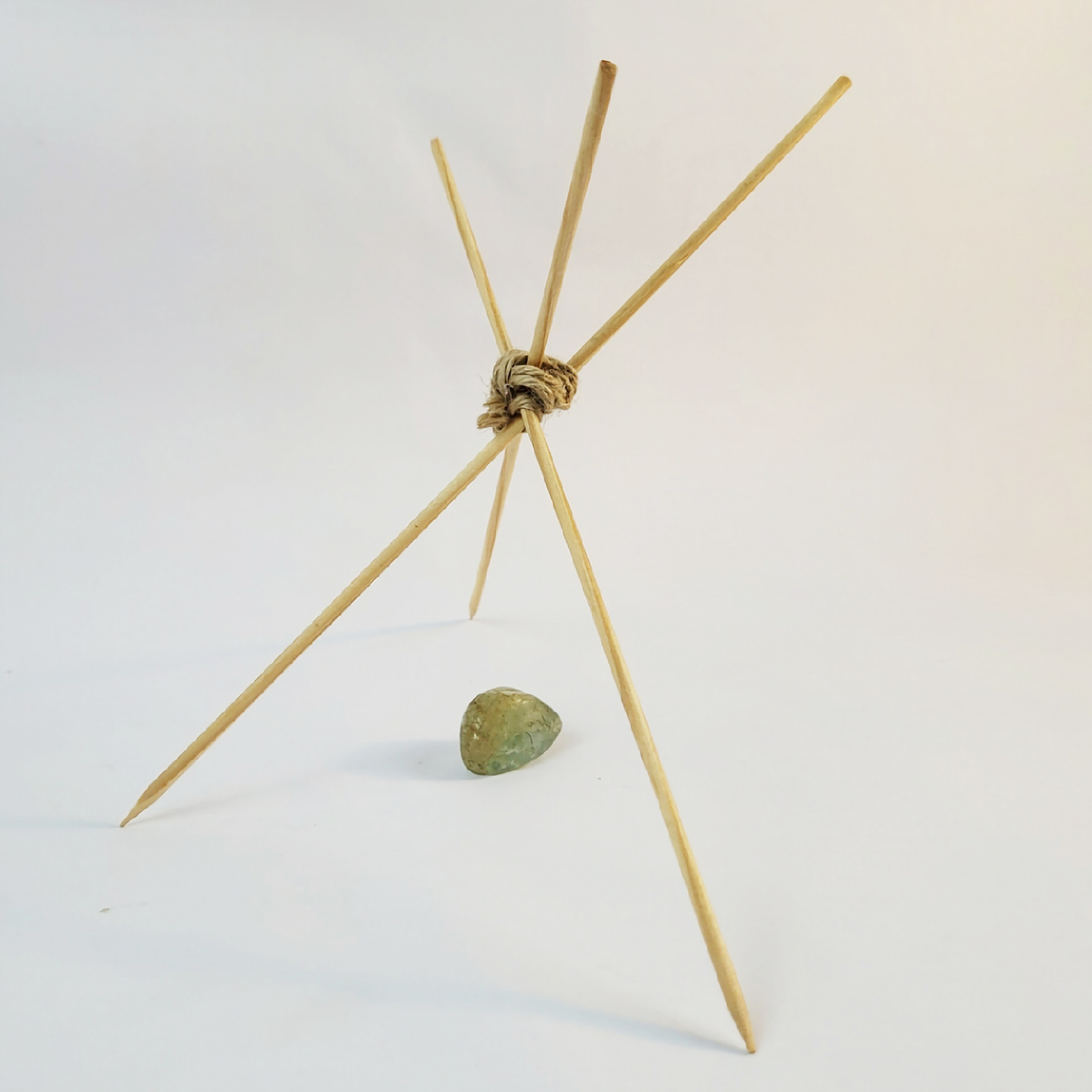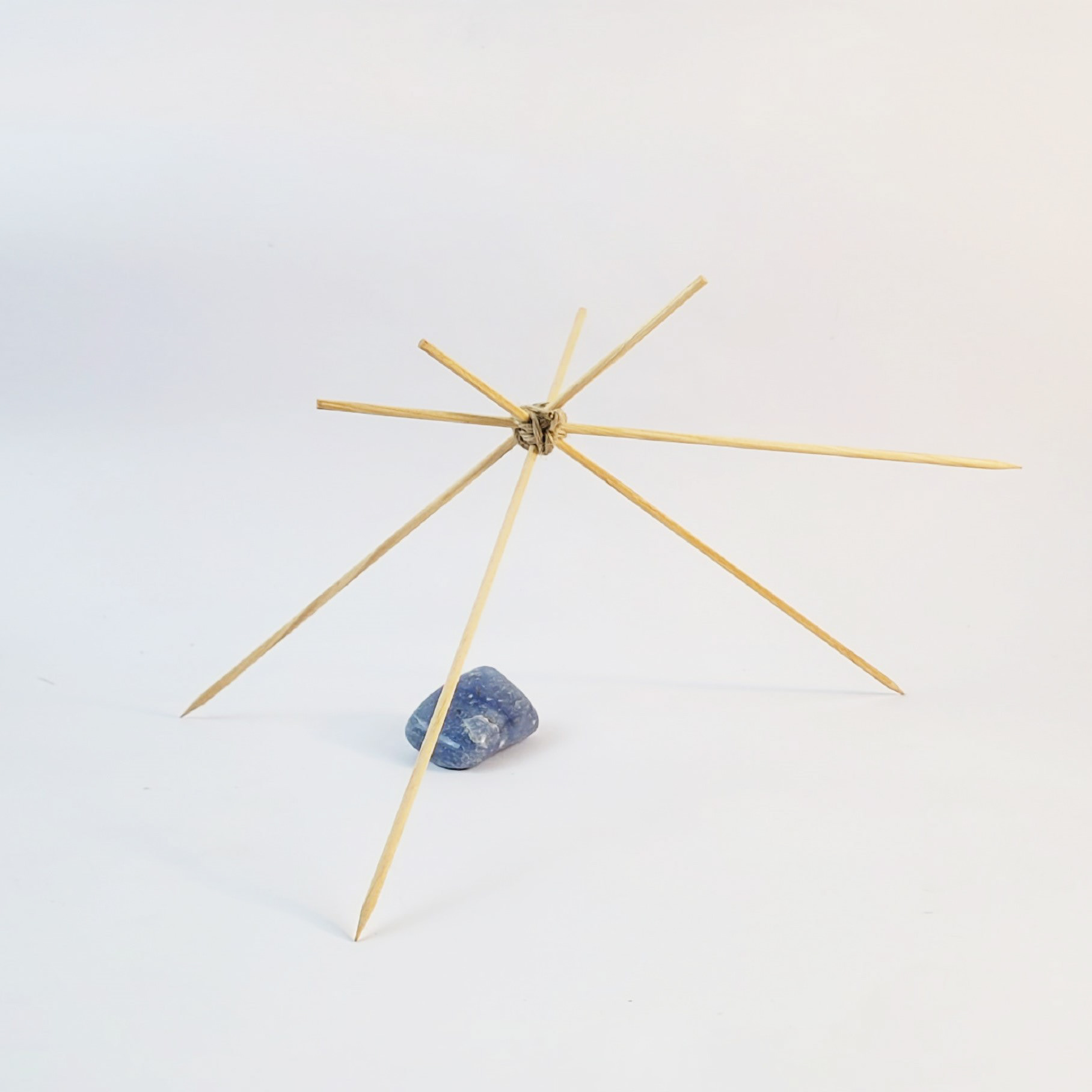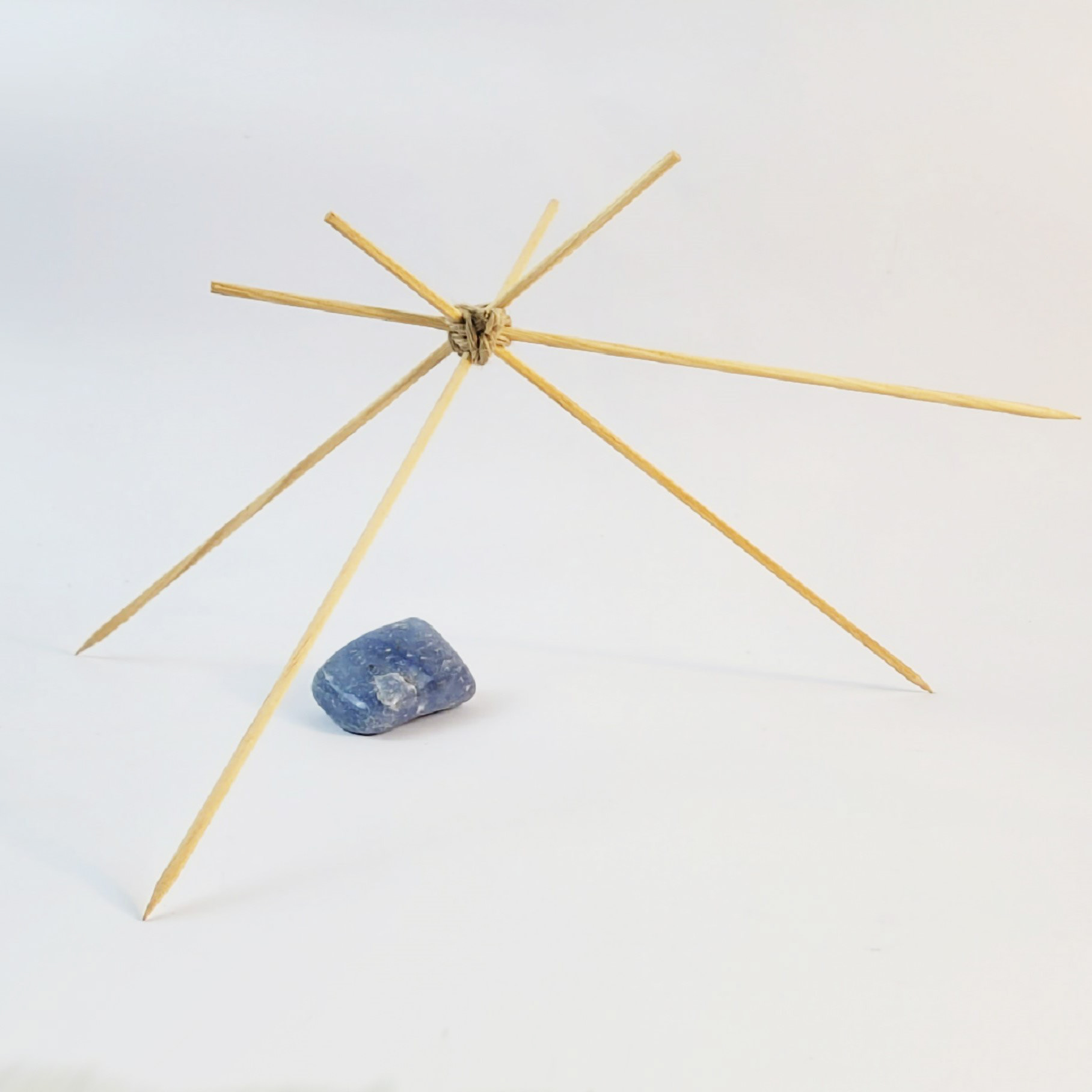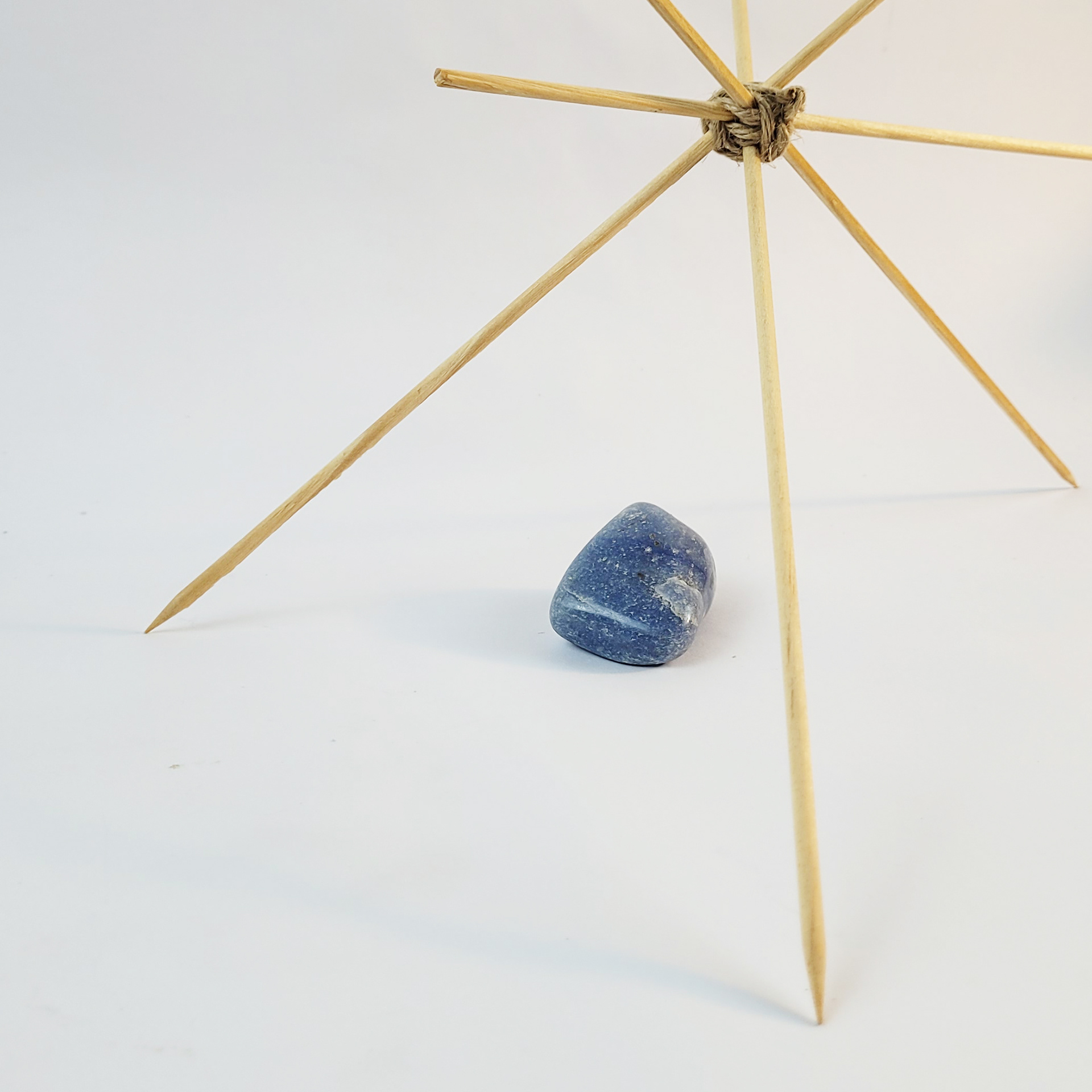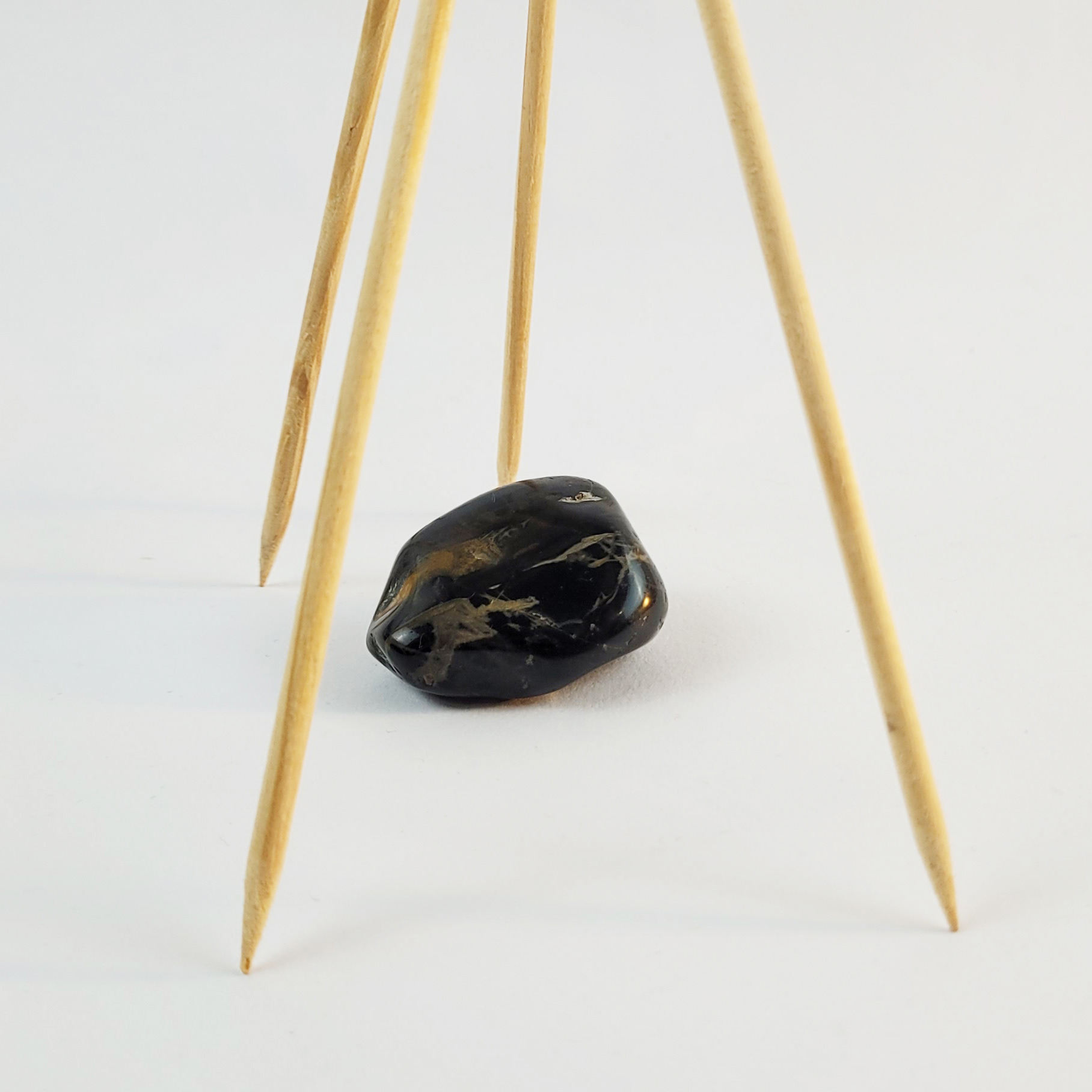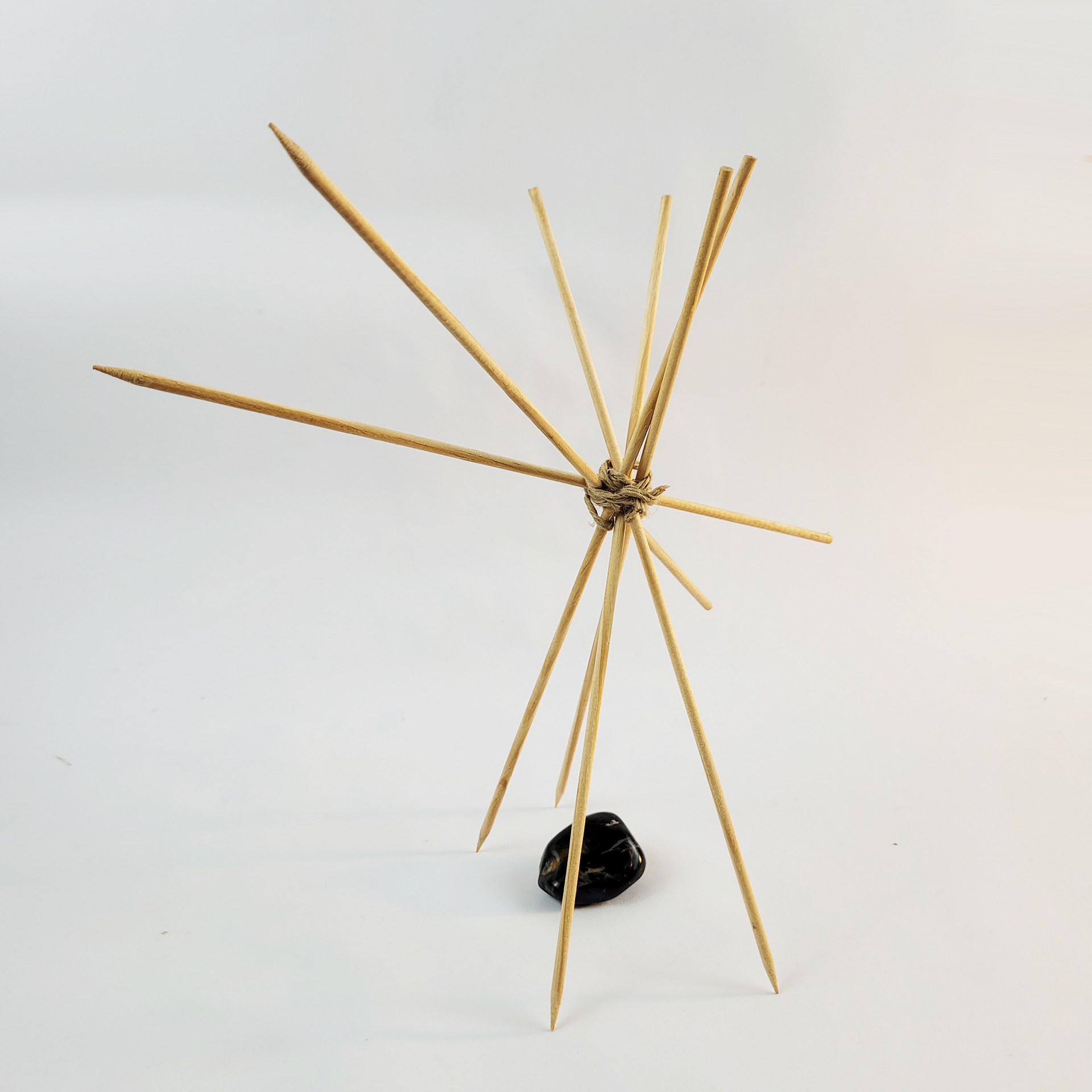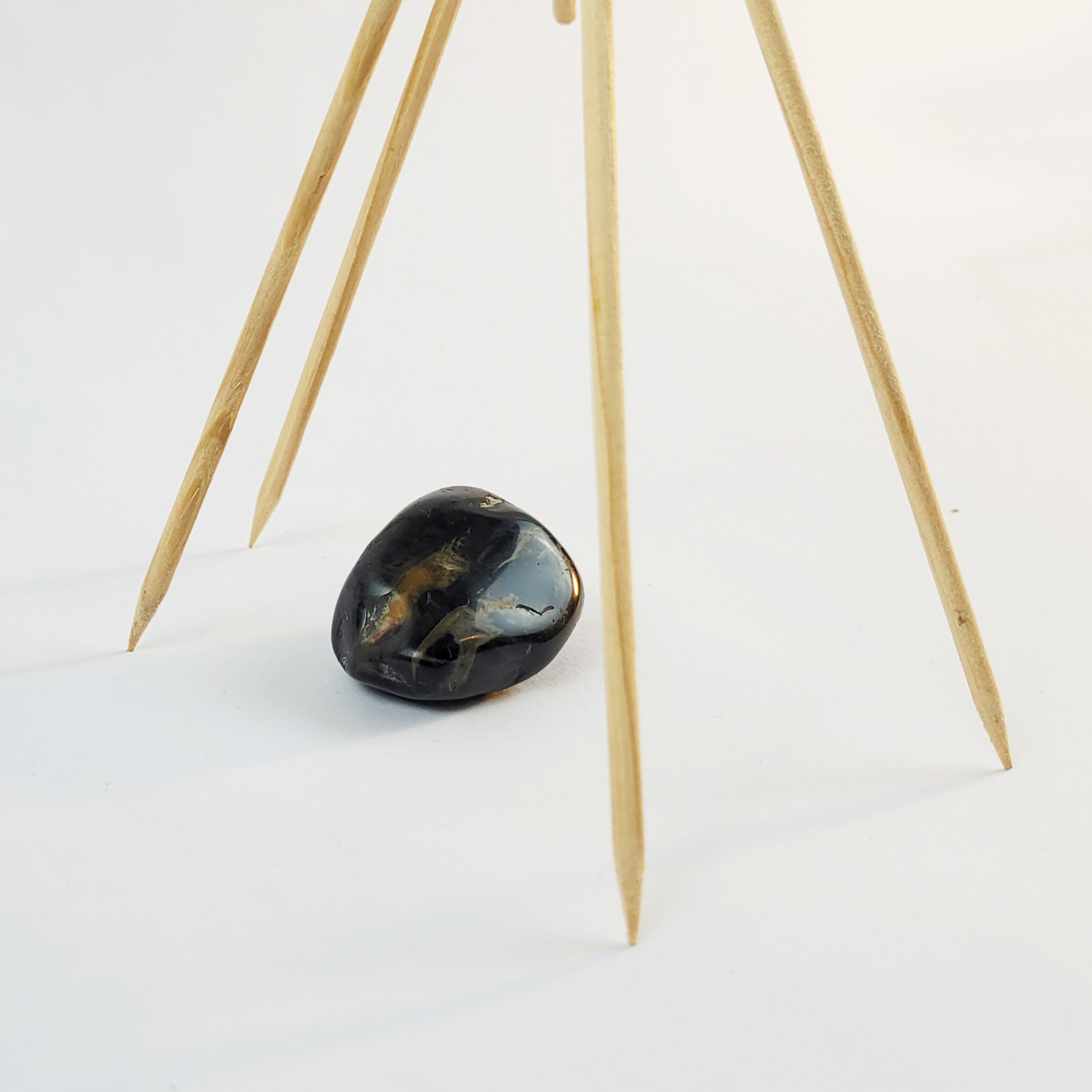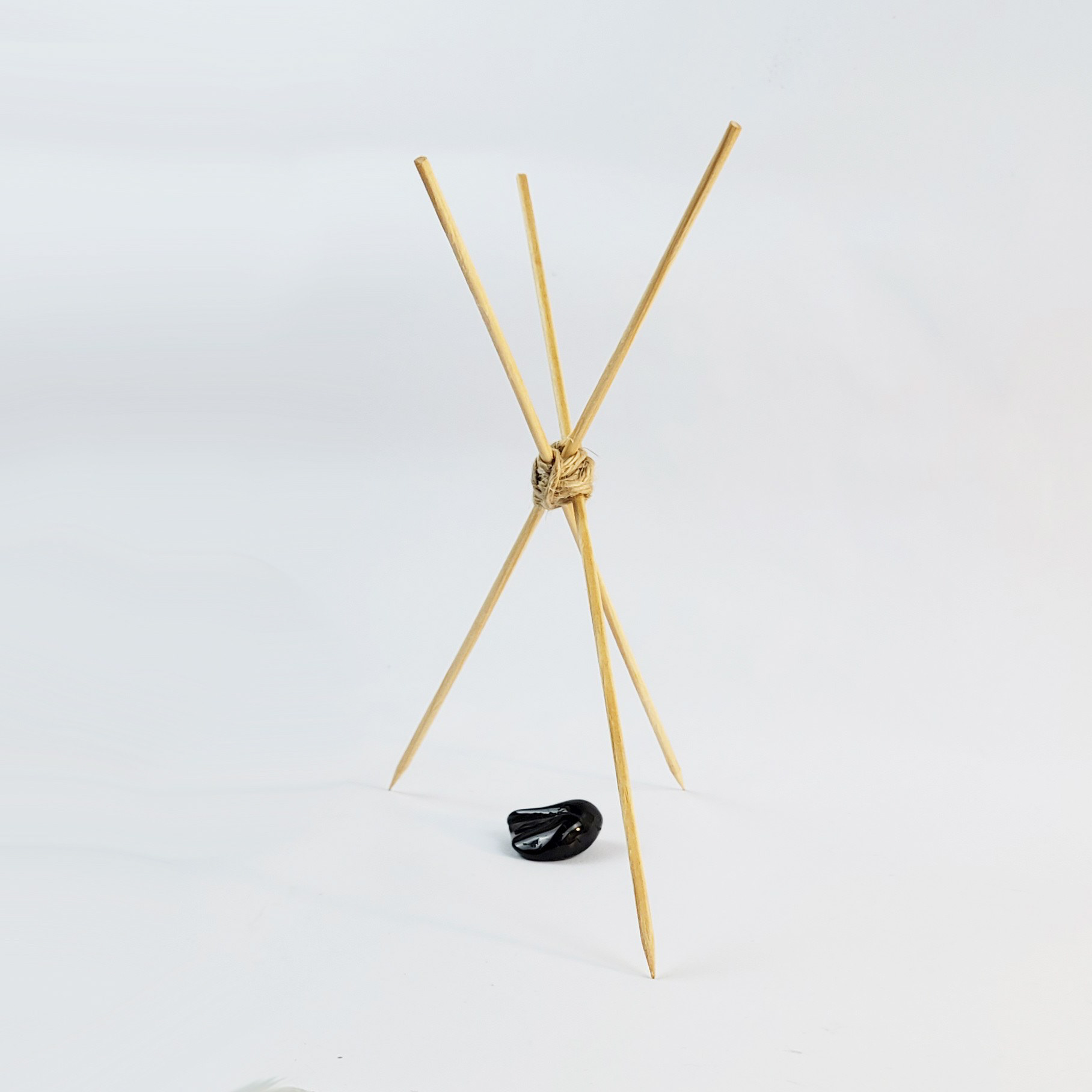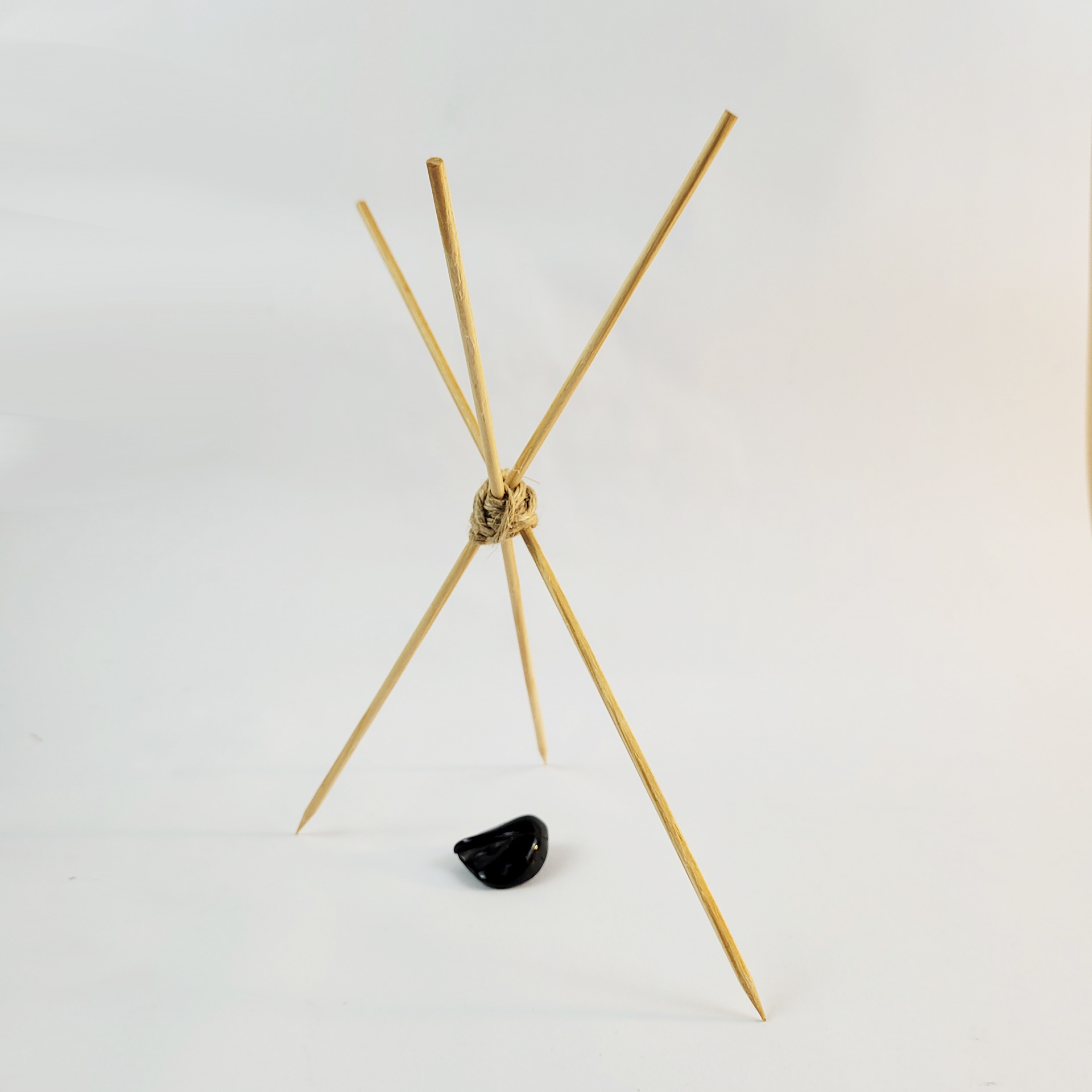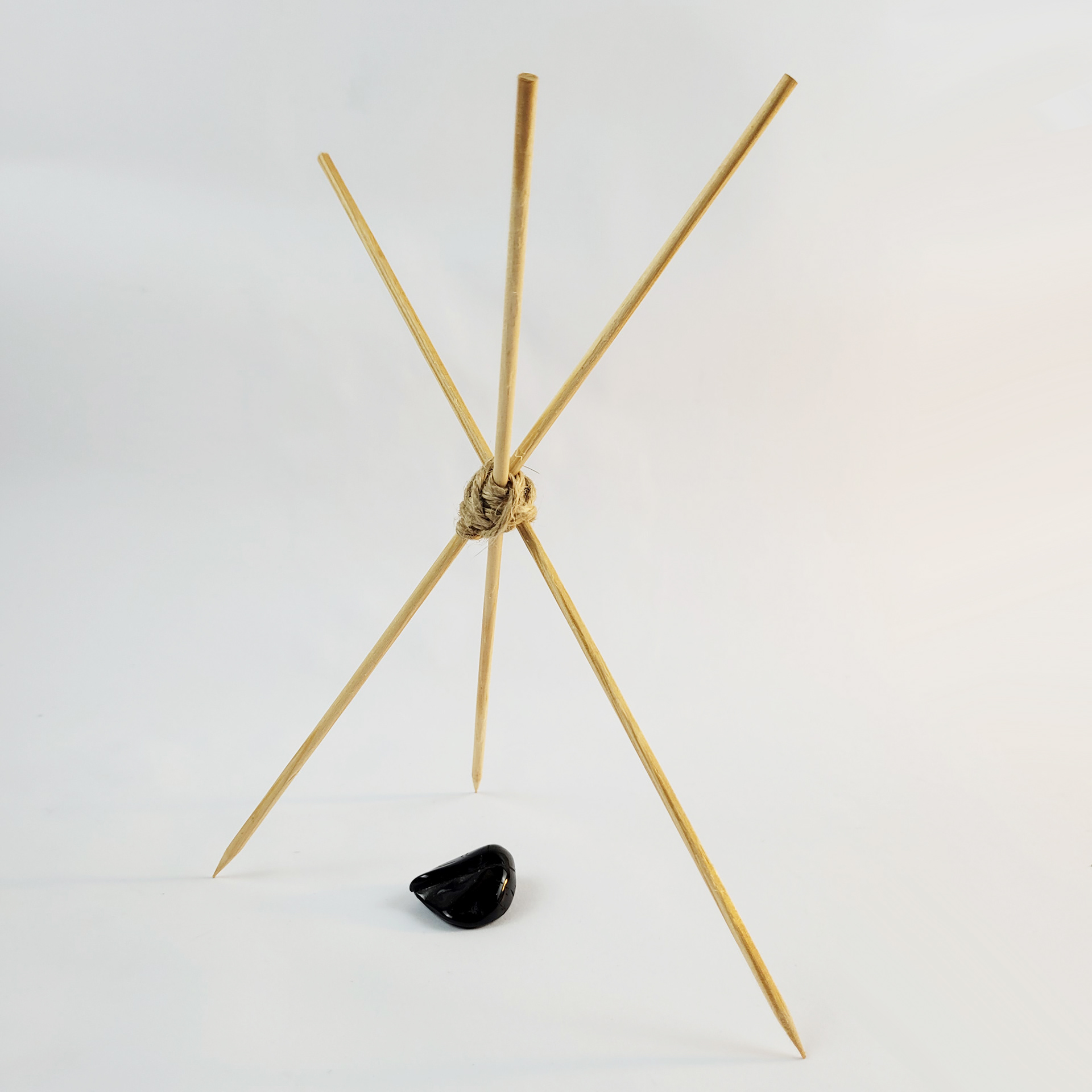Desde 2009, os espetos de bambu repousavam — resquícios de uma ideia abortada de pipas-satélite durante uma residência artística em São Paulo. Mais tarde, transformaram-se em ferramentas pedagógicas com crianças no Parque Lage e em escolas públicas do interior de Goiás. Mas foi apenas em agosto de 2024 que começaram a ganhar vida no ateliê: tornaram-se estruturas para delimitar um espaço seguro para cristais, ecoando as tendas de lençol da infância. A sugestão de uma amiga curadora — “e se você usasse uma pedra do Aterro do Flamengo?” — reconectou os materiais à minha pesquisa sobre camadas de história, apagamentos, sexualidades desviantes e monumentos modernos. Foi então que os Shelters emergiram: abrigos, antenas, criaturas, naves — manifestações entre escultura e pintura, entre gesto e desejo das formas que acolhem.
O uso do termo Shelter, em inglês, vem da leitura sobre as origens da arquitetura nessa língua, algo que me marcou profundamente. Mais tarde, a referência se expandiu ao entrar em contato com a ocupação TH.2058 de Dominique Gonzalez-Foerster, que imaginava a Tate Modern 50 anos no futuro — submersa sob chuvas contínuas numa Londres apocalíptica. Ali, réplicas gigantes de esculturas de Calder e Louise Bourgeois conviviam com beliches, livros e projeções de obras cinematográficas de ficção científica. Essa cena expandida, sensível e ficcional, também habita meus Shelters: lugares de refúgio, fabulação e reprogramação do corpo.
Since 2009, bamboo skewers lay dormant — remnants of an unrealized idea for satellite-kites during an artistic residency in São Paulo. Later, they served pedagogical purposes with children at Parque Lage and public schools in the interior of Goiás. But it was only in August 2024 that they began to come alive in the studio: they emerged as delimiting structures for a safe space for crystals, echoing the childhood blanket-forts I used to build. A suggestion from a curator friend — to use a stone from the Aterro do Flamengo — reconnected these materials with my ongoing research into layers of history, erasure, deviant sexualities, and modern monuments. From there, the Shelters emerged as shelters, antennas, creatures, vessels — manifestations between sculpture and painting, between gesture and desire in forms that embrace.
The use of the English word "Shelter" came from my early reading on the origins of architecture in that language — something that deeply struck me. Later, the term expanded through my encounter with Dominique Gonzalez-Foerster’s installation TH.2058, which imagined the Tate Modern 50 years into the future, submerged in constant rain in a dystopian London. Inside, gigantic replicas of sculptures by Calder and Louise Bourgeois coexisted with bunk beds, books, and projections of science fiction film excerpts. That speculative, affective, expanded environment also inhabits my Shelters: spaces of refuge, fabulation, and bodily reprogramming.

